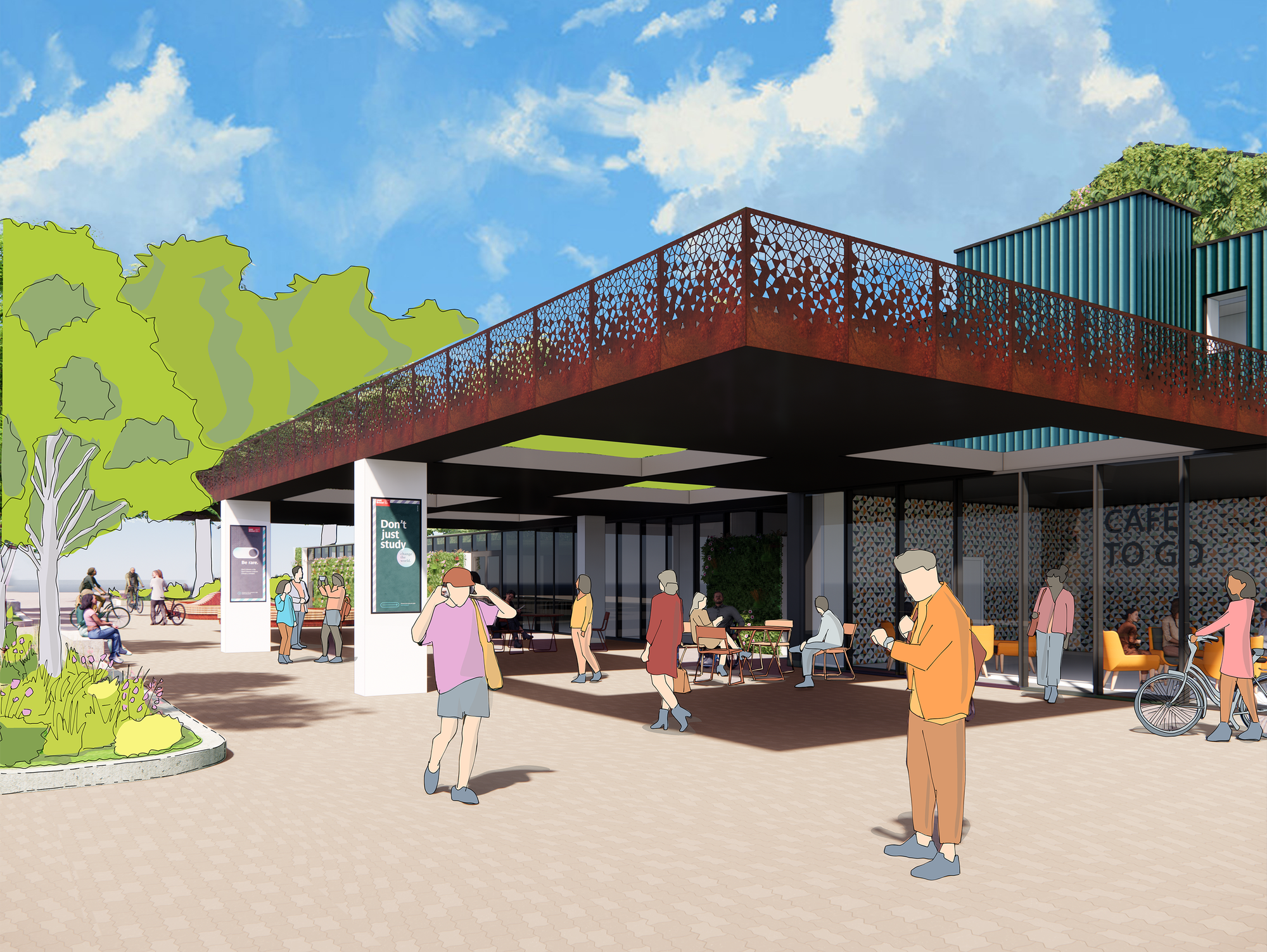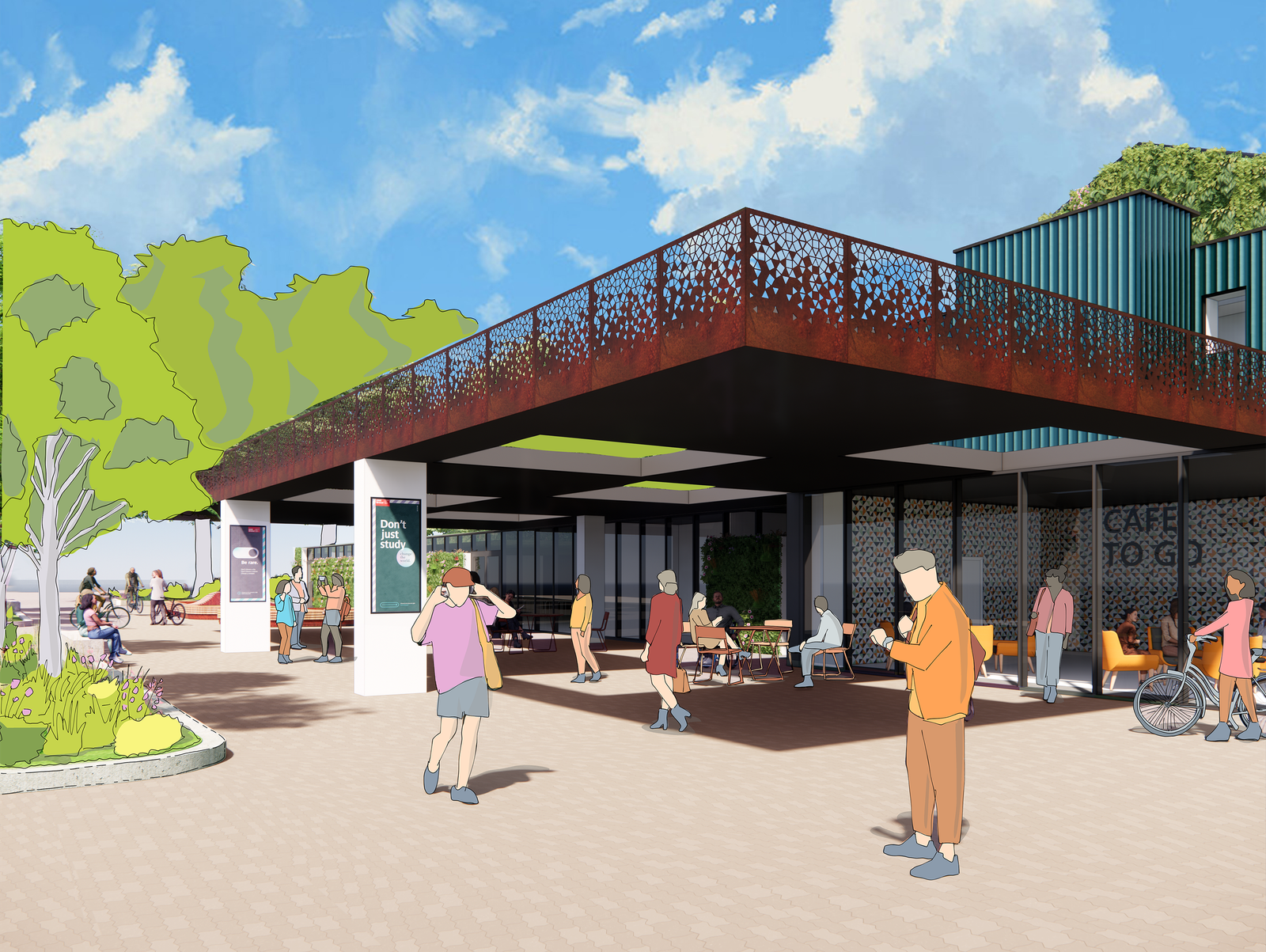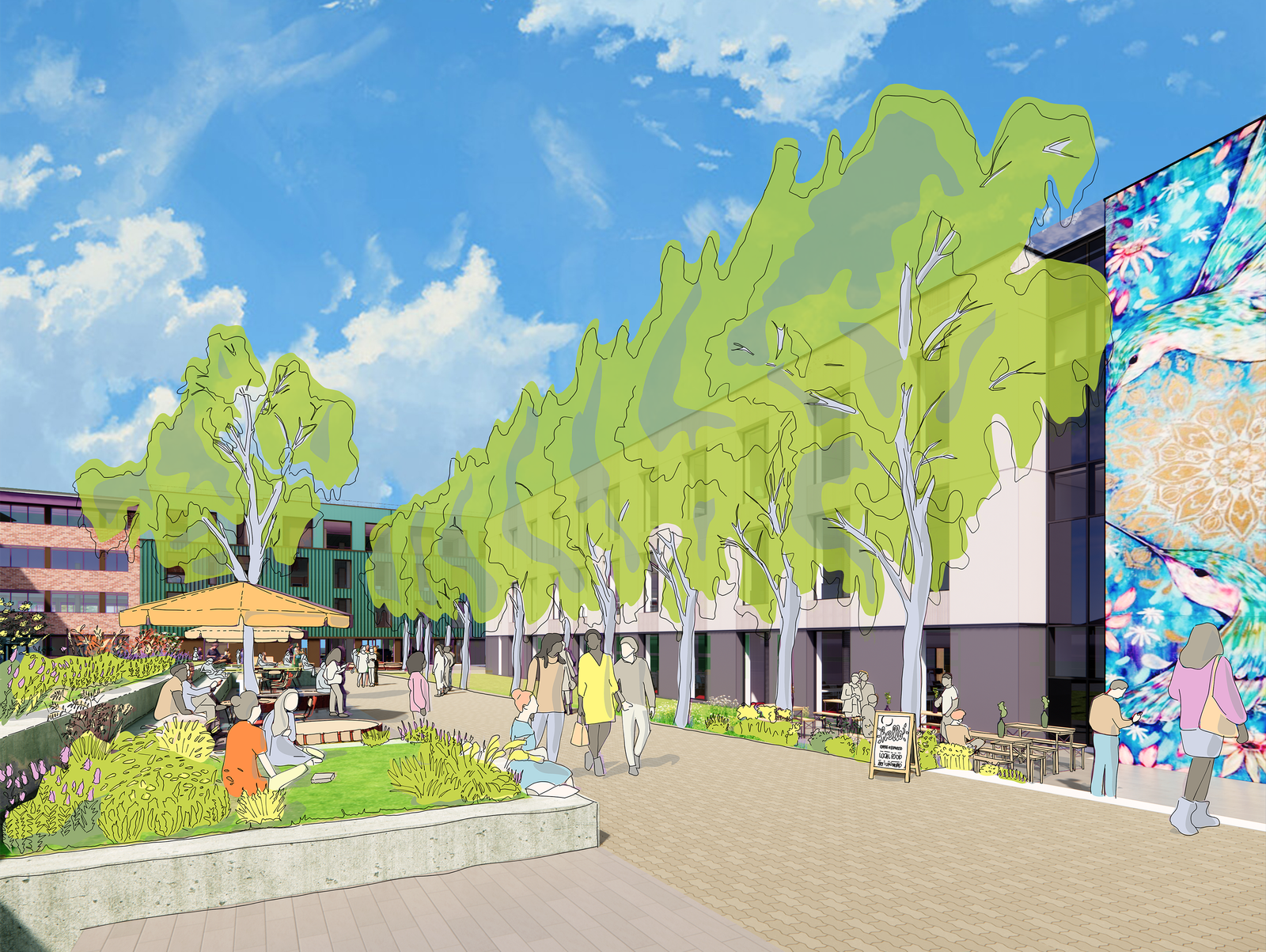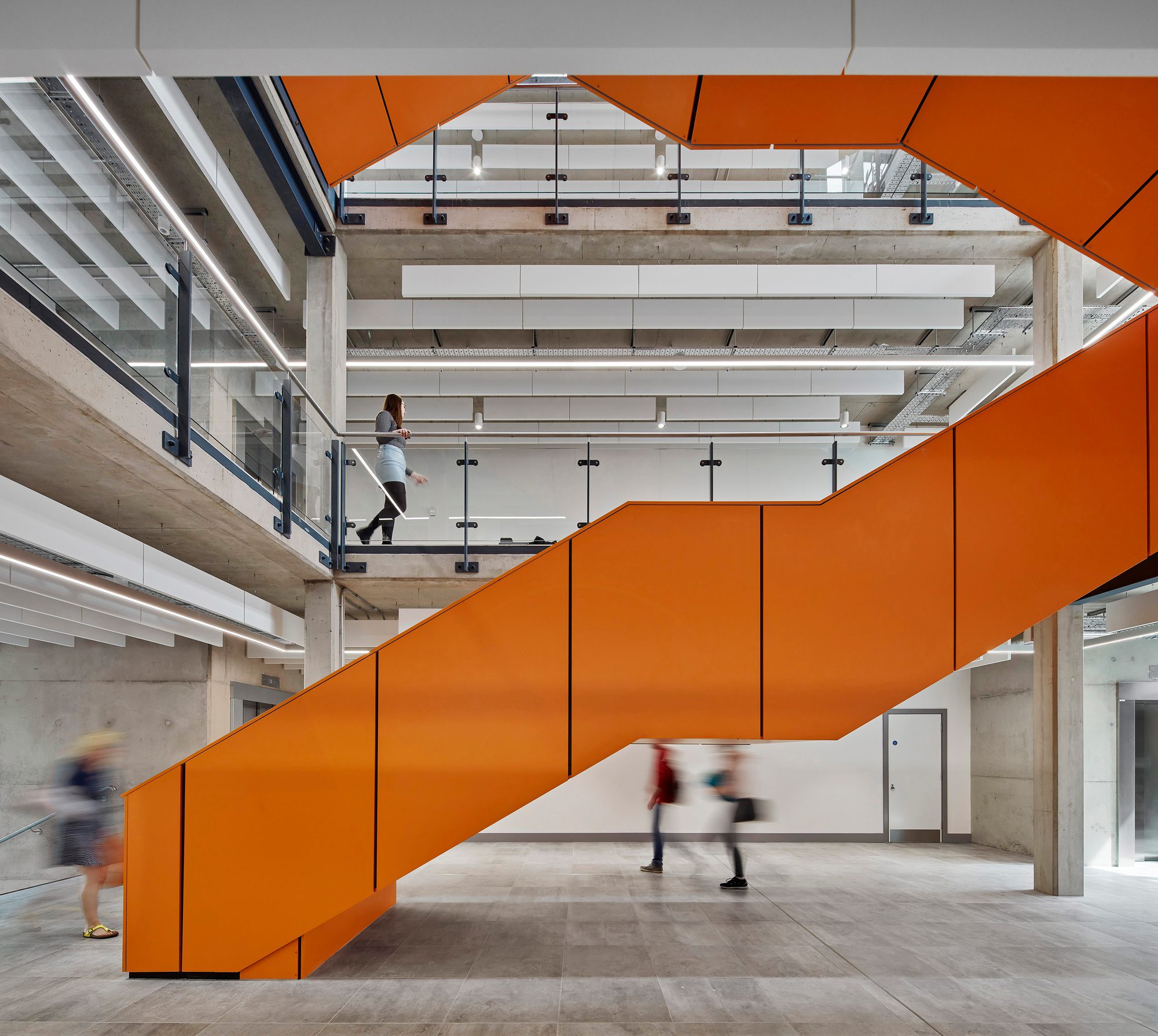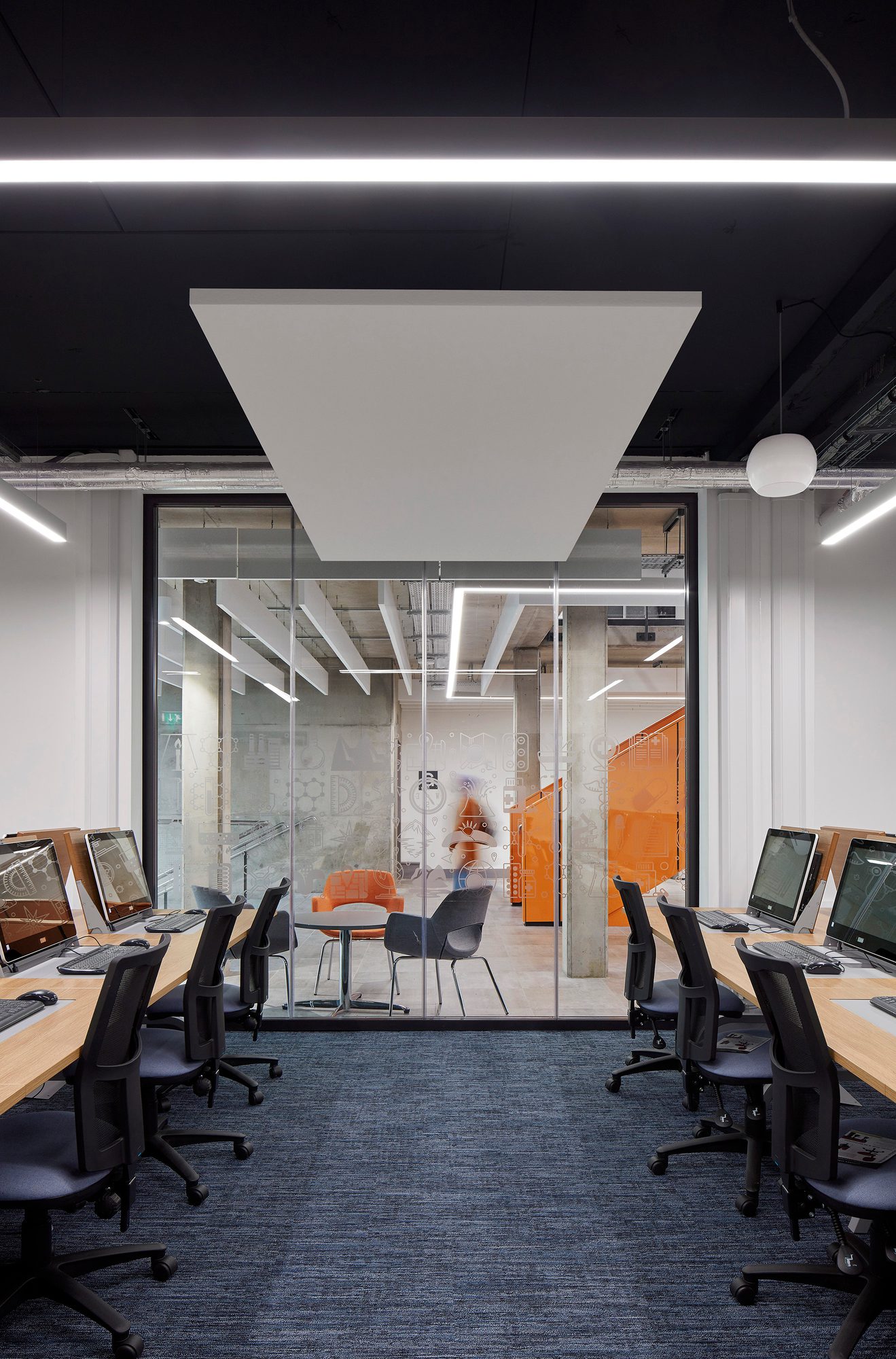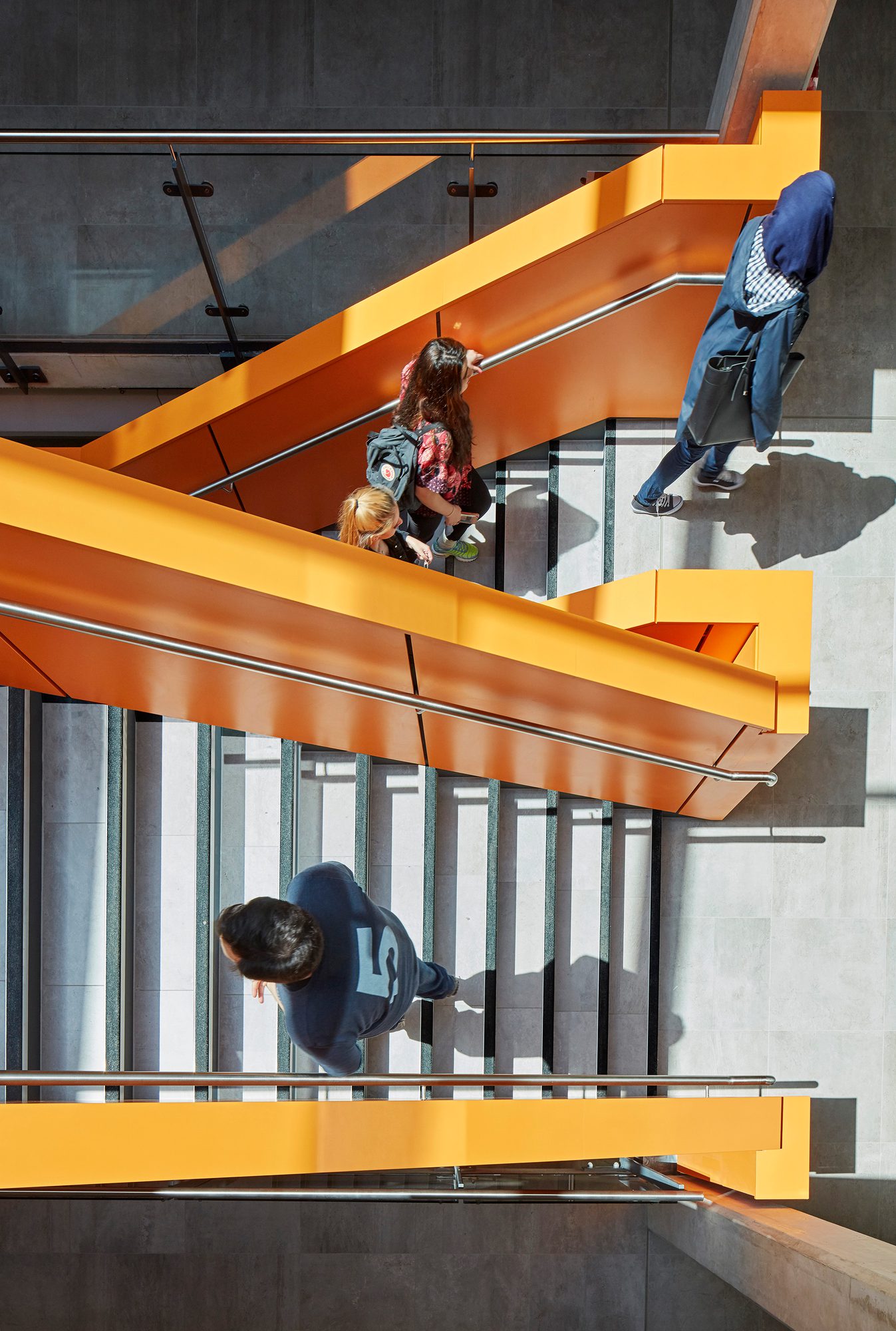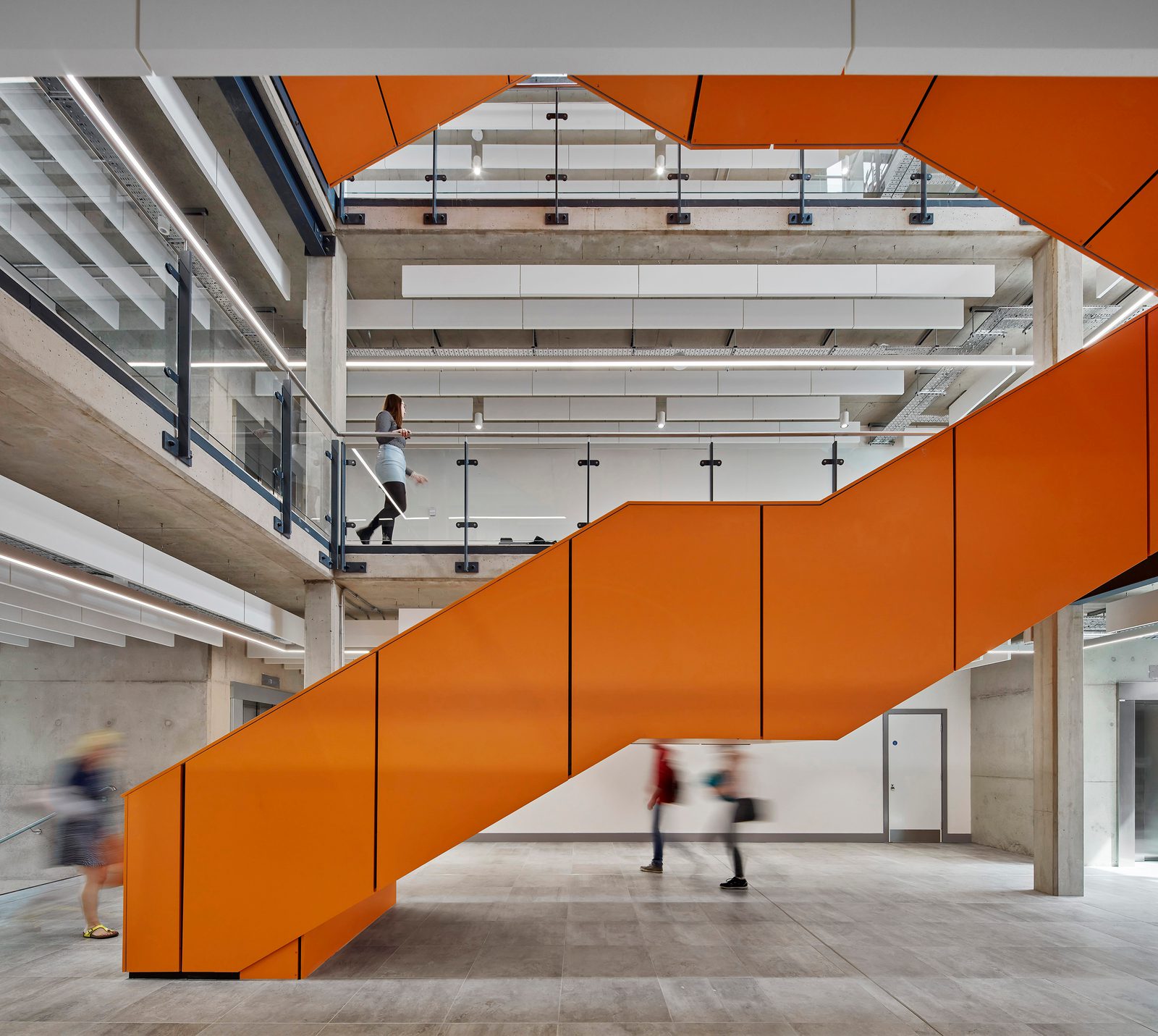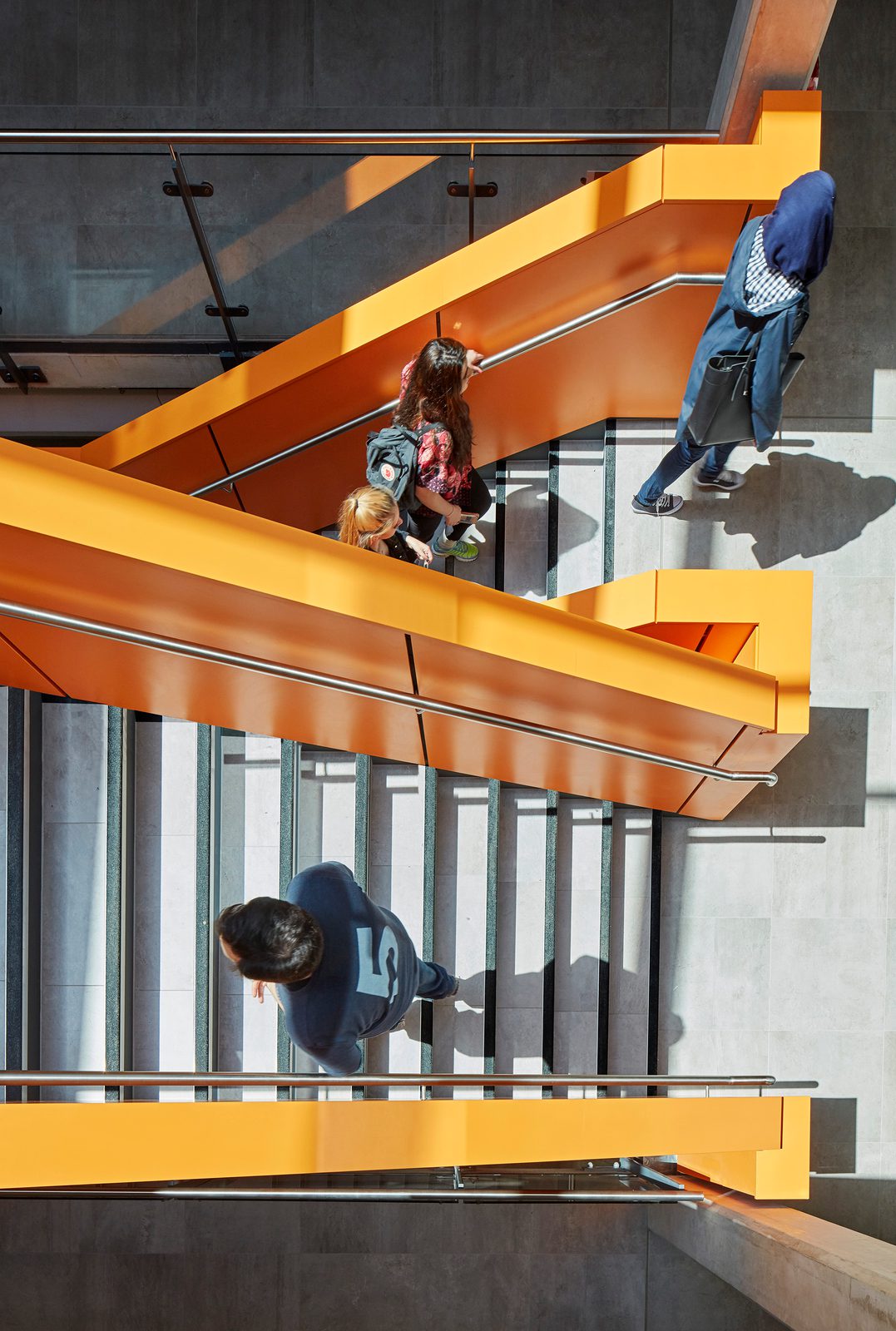Thought Leadership
How universities can reduce estate costs and build long-term resilience
by AHR
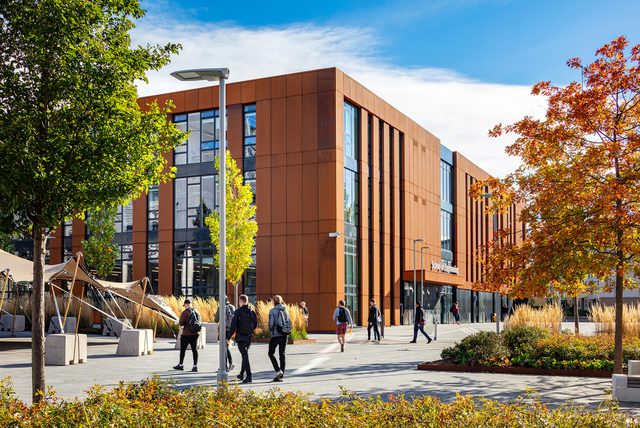
University estates are facing significant and ongoing financial pressures.
Property operating costs have risen by 35% in just two years, energy prices have more than doubled, and capital investment remains approximately £1 billion below pre-pandemic levels1, creating real challenges for higher education estate management.
These financial pressures sit alongside growing expectations around sustainability, the student experience and estate adaptability. It’s a complex challenge: how universities can reduce operational costs while maintaining quality, meeting environmental targets, and supporting new ways of teaching, learning and collaborating.
We’ve worked closely with university estate teams across the UK to help address these issues. We understand that most already have the insight and ambition to act; the real challenge is often capacity, prioritisation and implementation. Our role is to support that journey with practical, design-led and data-informed strategies that balance cost, carbon and campus performance.
Recognising shared pressures on university estates
Energy now represents close to 30% of many university estates’ operational budgets2. It’s a significant shift that reflects global energy markets and the high baseline consumption of ageing, often inefficient university buildings.
While government intervention helped stabilise wholesale prices in the short term, many institutions are still contending with elevated long-term costs, making energy efficiency in universities a pressing concern.
At the same time, space utilisation pressures are mounting. Shifts in learning delivery, the rise of hybrid working, and decentralised research activity have changed how campuses operate.
Despite lower occupancy in some areas, estates teams are still managing the cost and compliance burden of heating, lighting, and maintenance burden of heating, lighting and servicing buildings that may no longer reflect current or future demand.
Universities are also working to meet ambitious carbon reduction targets. Some have been able to make meaningful progress, particularly where funding or newer buildings support lower-carbon operations, but for many it continues to be a huge undertaking.
Older, less efficient buildings, legacy systems and limited capital, all present ongoing constraints to deeper carbon reductions. Tackling these challenges requires more than technical upgrades, it calls for efficient and flexible, strategic estate planning that brings sustainability and cost management together.
Practical actions to reduce estate costs and carbon emissions
While every institution’s estate is unique, many of the most effective approaches focus on three connected themes:
Improving energy performance in university estates
A comprehensive energy strategy is the foundation for long-term savings. Energy audits and building performance reviews can uncover inefficiencies caused by outdated heating systems, poorly configured controls or energy use that exceeds actual need. Smart meters and analytics help estates teams track performance, spot anomalies and monitor interventions.
Where capital investment is possible targeted retrofit can significantly reduce consumption. These interventions can include air-source or ground-source heat pumps, high-performance glazing, LED lighting and demand-controlled ventilation. On-site renewables such as solar PV or battery storage systems offer further gains and strengthen low-carbon campus design.
As part of a project to refurbish and renovate the former Technology Building at the University of Huddersfield, we incorporated energy efficient measures into the scheme. A shell and core remodel allowed the installation of new, efficient mechanical and electrical systems, cutting maintenance and operating costs. 480 solar panels now generate clean electricity, reducing the university’s reliance on conventional energy sources.
 Laura Annie Willson Building, Huddersfield
Laura Annie Willson Building, HuddersfieldThermal imaging technology also offers valuable insight for building diagnostics, giving universities a non-invasive method to identify heat loss, insulation failures and potential maintenance issues. By visualising the unseen, estates teams can prioritise investment and adopt a proactive maintenance strategy, helping to extend building life while improving efficiency.
When carefully planned and delivered in line with asset renewal cycles, comprehensive estate upgrades can lead to significant reductions in energy use and operating costs, while also improving comfort and supporting the creation of sustainable university campuses.
Estate rationalisation and space optimisation
Estate rationalisation is a strategic step towards rebalancing the campus portfolio. It means realigning the estate with actual demand and where it delivers value. Many universities have accumulated buildings over decades. In taking a step back, using space utilisation data, academic forecasts, and stakeholder input, universities can pinpoint areas of consistently low demand and make evidence-based decisions.
Some spaces can be reconfigured for better use. Others may be released altogether. This reduces ongoing overheads and enables strategic reinvestment in higher-performing parts of the estate.
We supported the University of Edinburgh undertaking surveys of their estate to inform feasibility studies for a programme of refurbishment, retrofit and departmental relocations. Across four buildings, our geomatic consultancy team undertook scan to BIM surveys producing detailed 2D drawings, floor plans, internal and external elevations and 3D models.
 The University of Edinburgh Geomatic Surveys
The University of Edinburgh Geomatic SurveysAt the University of the West of England (UWE), our masterplan for the redevelopment of Blocks A–N demonstrates how retention and reinvention can drive long-term value. Rather than demolishing and rebuilding, the strategy focused on retaining existing structures and aligning them with the university’s evolving needs and reducing embodied carbon.
Our phased approach set out a clear framework for upgrading performance through targeted retrofit, futureproofing systems for low-carbon integration, and improving usability through carefully considered interventions. The integration of a Building Management System (BMS) integration will enable real-time monitoring and energy optimisation, ensuring the estate performs as efficiently as possible.
Designing adaptable and flexible university spaces
As the role of the university evolves, so too must the estate. Modern campuses need to support collaboration, digital integration and multifunctional learning environments that adapt to how students and researchers study, socialise and innovate. Spaces must support a mix of individual, group and remote activity, while being agile enough to evolve with future needs.
Retrofitting existing buildings to deliver that flexibility can offer excellent value. Well-designed interventions, such as rethinking layouts, improving circulation and integrating modular elements, can extend the life and relevance of existing buildings while reducing embodied carbon compared to new builds.
Adaptability isn’t just about space types, it’s also about how spaces are managed and maintained. We’ve seen results where estates teams combine physical upgrades with smarter systems and more responsive maintenance models.
The Joseph Priestly Building at The University of Huddersfield is an example of a sustainable refurbishment of a complex inefficient 1960s building. It now features flexible and futureproof teaching and learning environments that enable students and teachers to communicate and collaborate as a community.
Supporting university estate strategy through design and technical insight
With competing pressures on time, budget and space, estates teams are already working hard to keep operations running smoothly. External support adds value when it helps translate estate data, stakeholder needs and institutional goals into clear, deliverable actions.
By combining strategic planning with practical design and technical expertise, we help universities turn priorities into built outcomes. The following areas highlight where integrated, multidisciplinary support can help unlock value, manage risk, and deliver long-term estate resilience.
1. Use estate data to unlock design and efficiency insights
Most estates teams hold a wealth of information, space utilisation, energy performance, maintenance costs, but translating it into action isn’t always straightforward. We help visualise this information spatially, identifying underperforming areas and revealing patterns that guide investment. Mapping against building age, function, or lifecycle stage, these insights can shape masterplans, prioritise retrofit and guide funding decisions.
2. Align estate decisions with institutional priorities
Every estate intervention, whether a small upgrade or a major capital project, should align with what matters most to the institution; whether that’s resilience, cost control, student experience, or research capability. The government’s £86 billion commitment to R&D funding is a clear signal of support for the UK’s research base, and it presents an opportunity for estates teams to consider how space planning and infrastructure can enable growth, collaboration and innovation. We help universities translate these strategic priorities into physical design strategies and delivery pathways, ensuring individual projects contribute to a coherent estate plan while allowing for phased implementation and future adaptation.
3. Coordinate short-term actions with long-term estate goals
Quick wins like lighting upgrades or system optimisation can deliver rapid returns. But aligning these with long-term objectives is where value multiplies. By embedding technical advice into strategic planning early, such as assessing fabric-first opportunities or identifying the best sequencing for retrofit, we help universities make interventions that unlock further steps down the line.
4. Design through collaborative stakeholder engagement
The best-performing spaces are shaped through a deep understanding of how they’re used. We work with estates teams to engage academics, students and staff early in the design process, turning insight into solutions that support day-to-day activity and long-term value. Through collaborative briefing, co-design workshops, and space planning studies, we help test assumptions and surface hidden needs. This ensures spaces don’t just function efficiently but feel purposeful and well-used.
5. Turn compliance requirements into improvement opportunities
Energy performance requirements are often driven by regulation, but they also present an opportunity to enhance the usability, resilience and long-term value of the estate. By reviewing requirements through both a regulatory and design lens, we help ensure compliance-led upgrades contribute meaningfully to broader estate objectives
6. Extend estate team capacity with focused support
When estates teams are stretched for time or resource, focused external input can help maintain momentum. We work flexibly alongside internal teams providing technical scoping, retrofit design or stakeholder engagement to bring in the right expertise at the right stage. Our multidisciplinary approach across architecture and building consultancy helps connect strategic intent with delivery.
7. Build evaluation and learning into every project
Understanding the impact of change is essential for securing future investment. We support clients in setting clear objectives and success measures from the outset, creating the foundations for meaningful post-occupancy evaluation. Capturing performance data after completion supports more intelligent, responsive decision-making.
Shaping the future-ready university estate
University estate teams are operating in a more complex environment balancing financial pressures, sustainability commitments and evolving space needs.
But within that complexity lies an opportunity to reshape campuses into more efficient, adaptable, and future-ready environments that better support institutional goals.
In focusing on three connected areas, energy performance, estate rationalisation, and flexibility, universities can take confident, incremental steps toward more resilient estates. And by taking a structured approach to planning and delivery, they can ensure that each decision supports wider institutional priorities.
We build long-term partnerships with universities working collaboratively to design, plan and deliver estate strategies that create lasting value. Our multidisciplinary teams bring together architectural and building consultancy expertise, helping clients make informed decisions and implement change with confidence, even in challenging circumstances.
Explore how our university estate experts can help you reduce costs, decarbonise your campus and build long-term resilience.
Frequently asked questions
University estate costs are increasing due to higher energy prices, inflation in construction materials, and the ongoing maintenance of ageing buildings. Many campuses also face lower space utilisation as learning delivery evolves. Together, these factors have driven operating costs up by more than 35% in recent years.
Universities can reduce energy use by upgrading outdated systems, improving insulation, installing smart controls and monitoring consumption through live data. Targeted retrofit projects, such as heat pump installation, LED lighting and renewable generation, also deliver long-term savings and cut carbon emissions.
Estate rationalisation means aligning the size and use of a university’s estate with current demand. By analysing how spaces are used, universities can identify underutilised buildings, reconfigure layouts or release assets entirely. This helps reduce running costs, improve efficiency and reinvest in high-performing facilities.
Retrofit is one of the most effective ways to lower energy use, cut operational carbon and improve comfort without building new facilities. When planned strategically, retrofit can extend building life, reduce maintenance costs and make existing assets adaptable to future needs - all contributing to long-term resilience.
Flexible spaces enable universities to respond to changing teaching methods, hybrid learning and collaboration needs. They can be easily reconfigured to support group work, research or quiet study, making campuses more efficient and inclusive. Retrofitting existing spaces to increase flexibility is also a cost-effective, low-carbon alternative to new build.
By integrating data from energy systems, space utilisation, and maintenance records, universities gain a clearer picture of where to focus investment. Data visualisation tools and digital modelling, such as BIM, reveal performance gaps and help estate teams prioritise upgrades based on evidence rather than assumptions.
The UK Government’s £86 billion R&D funding commitment supports innovation and estate improvement within the higher education sector. Many universities are also aligning with net zero carbon targets and sustainability frameworks that encourage energy-efficient design, retrofit and renewable integration.
Posted on:
Nov 2nd 2025
Topics:
Share on
Related Articles

Thought Leadership
How flexible, multi-use spaces are shaping the future of university estates
Discover how flexible multi-use spaces in university estates enable adaptable learning, sustainable campus design, and improved student experience.
Date: 1 Oct 25
by AHR

Thought Leadership
Transforming university estates through retrofit-led design and decarbonisation
We combine asset targeting with robust modelling, performance testing, and technical analysis, we deliver retrofit solutions that cut carbon, reduce costs, and improve long-term estate performance.
Date: 26 Aug 25
by AHR

Thought Leadership
Optimising university estates to enhance the student experience
As competition among universities intensifies, the role of the campus estate in shaping student experience has never been more important.
Date: 15 Jul 25
by AHR

Thought Leadership
Boosting university income streams through collaborations with developers and local authorities
Universities face mounting financial pressures, many are turning to strategic partnerships with local authorities and private-sector developers.
Date: 31 Mar 25
